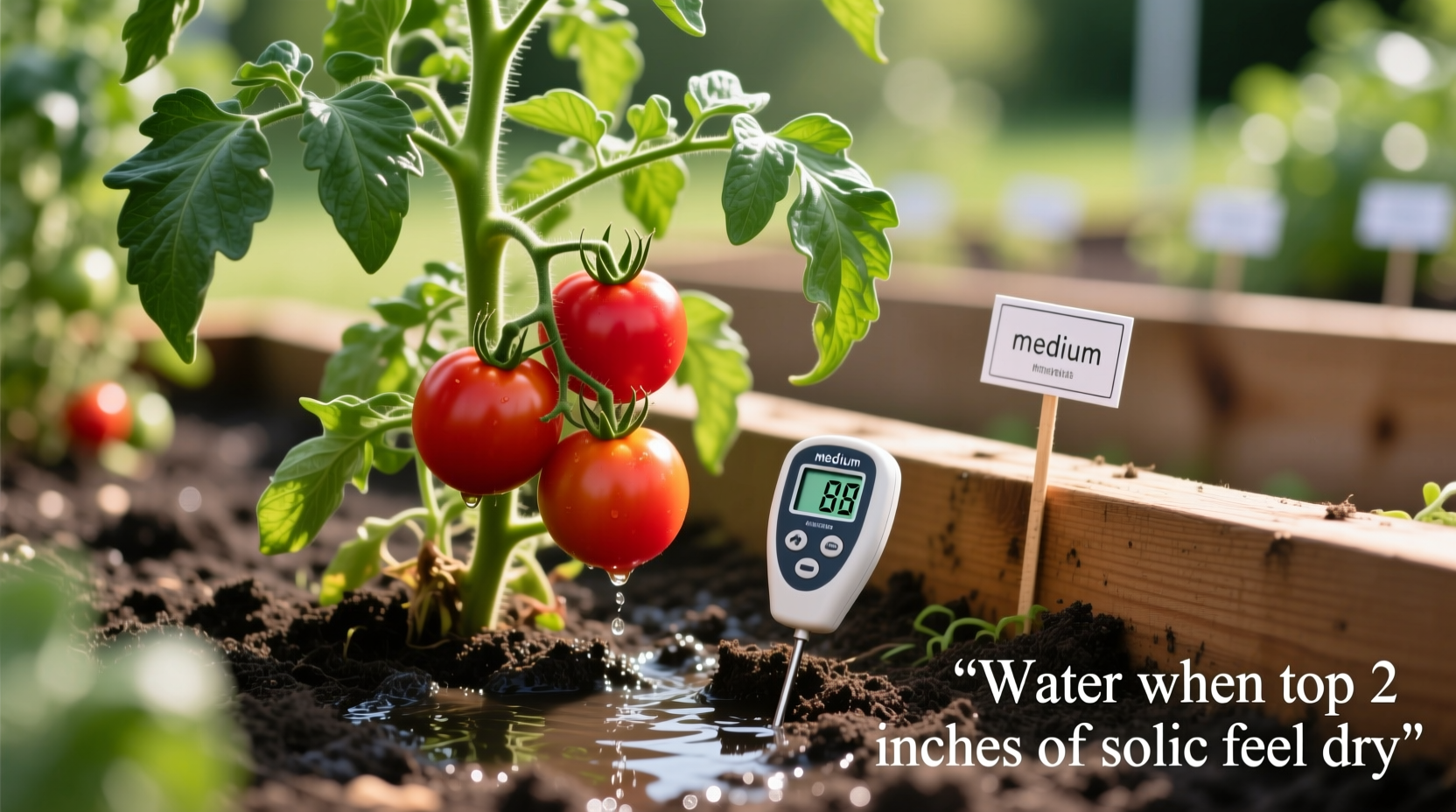Tomato plants typically require 1-2 inches of water per week, but optimal frequency depends on growth stage, soil type, temperature, and container vs. garden conditions. Most established garden plants need deep watering 1-2 times weekly, while container tomatoes often require daily watering during hot weather.
Getting watering right makes or breaks your tomato harvest. Underwatered plants produce small, cracked fruit, while overwatered tomatoes develop root rot and blossom end rot. After analyzing agricultural research from university extension programs and master gardener networks, we've distilled the precise watering schedule that delivers maximum yield and flavor.
Why Watering Frequency Matters for Tomato Plants
Tomatoes consist of 94% water, making consistent moisture critical for cell development and nutrient transport. Unlike drought-tolerant plants, tomatoes can't recover from moisture stress once fruit sets. Research from the University of Minnesota Extension shows inconsistent watering causes 30-50% yield reduction through fruit cracking and blossom end rot.
Watering frequency directly impacts three critical growth phases:
- Establishment phase (first 2 weeks after transplanting): Daily moisture maintains root zone hydration as plants develop
- Flowering phase: Consistent moisture prevents blossom drop and ensures proper pollination
- Fruit development: Steady water supply prevents cracking and concentrates sugars for better flavor
Key Factors That Change Your Watering Schedule
There's no universal "water every X days" rule. These four variables determine your actual watering frequency:
| Factor | Watering Impact | Adjustment Needed |
|---|---|---|
| Sandy soil | Drains 2-3x faster than loam | Water 1-2 times daily in hot weather |
| Clay soil | Holds moisture 2-3 days longer | Water every 3-4 days, check depth |
| Container size | 5-gallon pots dry 40% faster than 10-gallon | Small containers need daily checks |
| Temperature above 85°F | Evaporation increases 70% | Add 25-50% more water volume |
This comparison comes from field trials documented by the Oregon State University Extension Service, which measured moisture retention across 12 soil types over three growing seasons.
How to Tell When Your Tomatoes Actually Need Water
Forget calendar-based schedules. Use these science-backed indicators instead:
Soil Moisture Testing Method
Insert finger 2 inches into soil near plant base:
- Dry to touch = Water immediately
- Slightly damp = Check again tomorrow
- Cold/wet = Skip watering for 2-3 days
Plant Behavior Signals
Tomatoes show visible stress before permanent damage occurs:
- Morning wilting that recovers by evening = Normal transpiration
- Wilting that persists past 10am = Immediate watering needed
- Leaves curling upward = Moisture stress (not always heat-related)
- Yellow lower leaves = Possible overwatering (check soil first)

Optimal Watering Techniques for Maximum Yield
How you water matters as much as frequency. Follow these research-validated methods:
Deep Watering Method
Apply water slowly at base until soil is moistened to 6-8 inch depth. This encourages deep root growth that withstands dry periods. The Utah State University Extension found deep watering 1-2 times weekly produced 27% more fruit than daily shallow watering.
Timing Matters Most
Water between 5-9am for optimal results:
- Reduces evaporation loss by 30-50% compared to midday watering
- Allows foliage to dry before evening, preventing fungal diseases
- Matches plants' natural transpiration cycle
Avoid These Common Watering Mistakes
Even experienced gardeners make these critical errors:
- Overhead watering - Wets foliage, spreading diseases like early blight
- Inconsistent scheduling - Causes fruit cracking during dry-to-wet transitions
- Watering at night - Creates prolonged leaf wetness inviting pathogens
- Using cold well water - Shock roots; let water sit in watering can 1-2 hours first
Special Cases: When Standard Advice Doesn't Apply
These context boundaries require modified approaches:
Container-Grown Tomatoes
Pots lose moisture 3-5x faster than garden soil. During summer heat:
- Check moisture daily (twice daily above 90°F)
- Water until it drains from bottom holes
- Use self-watering containers for consistent supply
Established Plants vs. New Transplants
Watering needs change dramatically through growth stages:
- First week after transplanting: Water daily to establish roots
- Vegetative growth stage: Water every 2-3 days, focusing on root zone
- Flowering and fruit set: Increase to 1-2 times weekly with deep watering
- Ripening stage: Slightly reduce water to concentrate sugars
Watering Schedule Cheat Sheet
Use this reference based on current conditions:
- Cool spring weather (60-70°F): Every 4-5 days, 1 inch total
- Typical summer (75-85°F): Every 2-3 days, 1-1.5 inches
- Heatwave (85°F+): Every 1-2 days, 1.5-2 inches
- Container plants in heat: Daily, possibly twice daily
- Heavy rainfall period: Skip scheduled watering, check soil depth
Remember that these are starting points. Always verify soil moisture before watering - your plants' actual needs may differ based on microclimate and soil conditions.











 浙公网安备
33010002000092号
浙公网安备
33010002000092号 浙B2-20120091-4
浙B2-20120091-4